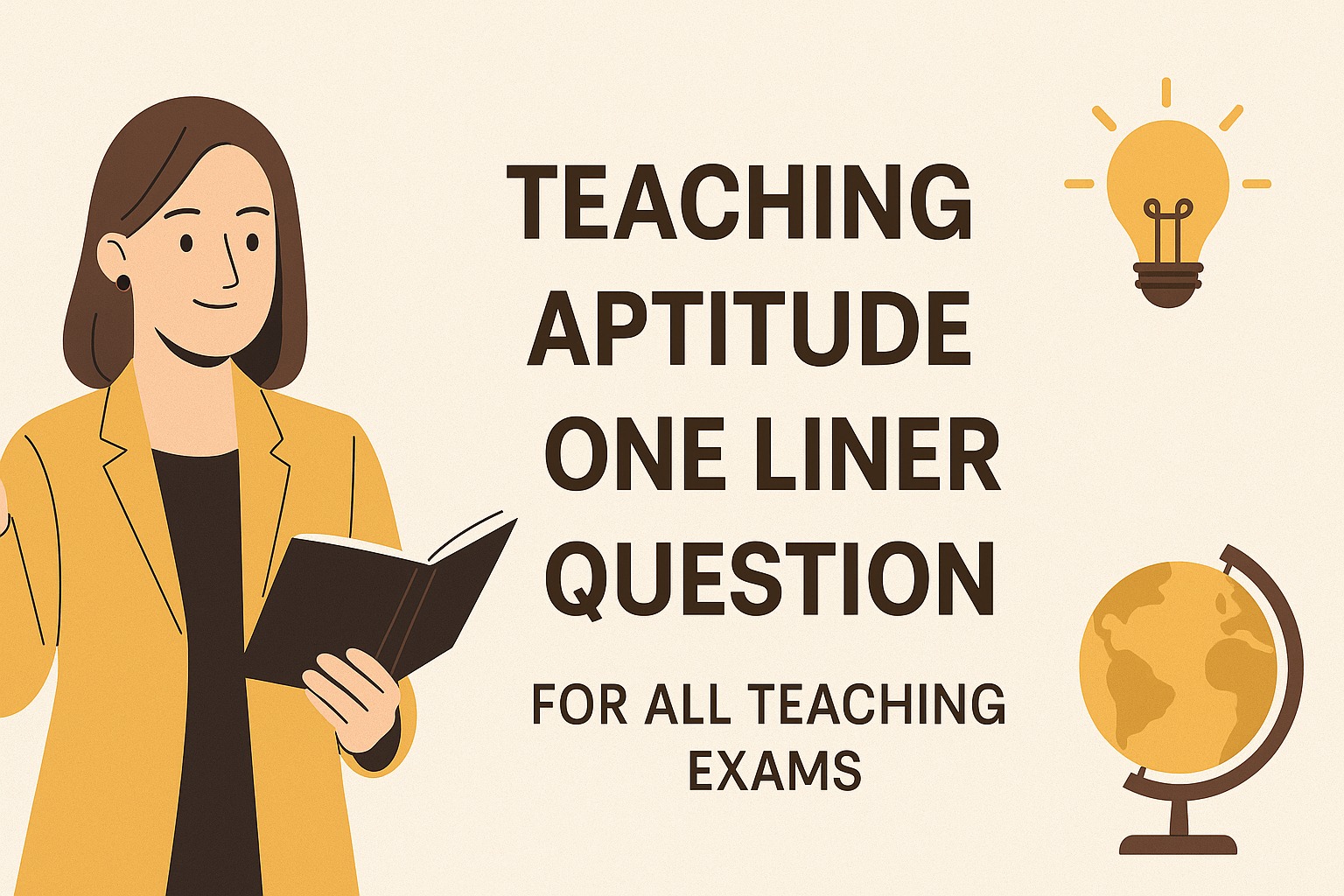
Check here Formal & Informal Fallacies: 50 MCQs in Hindi and English with Detailed Answers
1. Identify the type of fallacy in this argument:
“If it rains, the ground will get wet. The ground is wet; therefore, it must have rained.”
(A) Affirming the Consequent
(B) Denying the Antecedent
(C) Straw Man
(D) False Cause
Answer:
(A) Affirming the Consequent
Explanation: This is a formal fallacy. The error lies in assuming that just because the consequent (wet ground) is true, the antecedent (rain) must also be true. Other factors could cause the ground to be wet.
2. What fallacy is present here?
“If I study, I will pass the exam. I didn’t study, so I won’t pass the exam.”
(A) Denying the Antecedent
(B) Affirming the Consequent
(C) False Dilemma
(D) Circular Reasoning
Answer:
(A) Denying the Antecedent
Explanation: This is a formal fallacy. It assumes that if the first condition is false, the result cannot occur, which is not always true.
3. Which fallacy is demonstrated in the statement below?
“We must buy this product because everyone else is buying it.”
(A) Bandwagon Fallacy
(B) Hasty Generalization
(C) Ad Hominem
(D) Appeal to Ignorance
Answer:
(A) Bandwagon Fallacy
Explanation: This is an informal fallacy that appeals to popularity rather than reason or evidence.
4. Identify the fallacy:
“If we allow people to skip classes, soon they will stop attending school altogether.”
(A) Slippery Slope
(B) False Cause
(C) Appeal to Fear
(D) Straw Man
Answer:
(A) Slippery Slope
Explanation: This is an informal fallacy that assumes one action will inevitably lead to a chain of negative events.
5. What fallacy does this argument contain?
“He must be wrong because he has a criminal record.”
(A) Ad Hominem
(B) Appeal to Emotion
(C) False Dilemma
(D) Circular Reasoning
Answer:
(A) Ad Hominem
Explanation: This is an informal fallacy where the argument attacks the person instead of addressing their claims.
6. What type of fallacy is present in this statement?
“You can’t prove aliens don’t exist; therefore, they must exist.”
(A) Appeal to Ignorance
(B) Red Herring
(C) Equivocation
(D) False Analogy
Answer:
(A) Appeal to Ignorance
Explanation: This is an informal fallacy that assumes something is true because it hasn’t been proven false.
7. Which fallacy does this argument illustrate?
“Because two events occurred in sequence, the first must have caused the second.”
(A) Post Hoc Ergo Propter Hoc
(B) Straw Man
(C) Begging the Question
(D) Appeal to Authority
Answer:
(A) Post Hoc Ergo Propter Hoc
Explanation: This is an informal fallacy assuming causation from mere correlation.
8. Identify the fallacy in this reasoning:
“All dogs have four legs. My cat has four legs. Therefore, my cat is a dog.”
(A) False Analogy
(B) Circular Reasoning
(C) Hasty Generalization
(D) Equivocation
Answer:
(A) False Analogy
Explanation: This is an informal fallacy that draws a false equivalence between two different things based on superficial similarities.
9. What fallacy does this argument contain?
“We have to either ban social media or accept its harmful effects.”
(A) False Dilemma
(B) Bandwagon Fallacy
(C) Appeal to Ignorance
(D) Slippery Slope
Answer:
(A) False Dilemma
Explanation: This is an informal fallacy presenting only two options while ignoring other possibilities.
10. Identify the type of fallacy:
“The CEO’s argument for reducing emissions is invalid because he drives a gas-guzzling car.”
(A) Ad Hominem
(B) Straw Man
(C) Red Herring
(D) False Cause
Answer:
(A) Ad Hominem
Explanation: This is an informal fallacy attacking the person rather than their argument.
11. Identify the fallacy:
“I failed the test because I didn’t wear my lucky socks.”
(A) False Cause
(B) Appeal to Emotion
(C) Begging the Question
(D) Circular Reasoning
Answer:
(A) False Cause
Explanation: This is an informal fallacy assuming a causal link between unrelated events.
12. What fallacy is demonstrated here?
“I should get an A on this paper because I worked really hard on it.”
(A) Appeal to Emotion
(B) Appeal to Authority
(C) Equivocation
(D) Straw Man
Answer:
(A) Appeal to Emotion
Explanation: This is an informal fallacy that appeals to feelings rather than facts.
Remaining MCQs Outline (13–50)
- Circular Reasoning: Using the conclusion as its premise.
- Straw Man: Misrepresenting someone’s argument to make it easier to attack.
- Hasty Generalization: Drawing a conclusion from insufficient evidence.
- Red Herring: Introducing irrelevant information to distract from the main issue.
- Equivocation: Using ambiguous language to mislead or confuse.
- Begging the Question: Assuming the conclusion in the premise.
- Appeal to Fear: Manipulating fear to persuade.
- False Cause: Confusing correlation with causation.
- Bandwagon Fallacy: Arguing something is true because many people believe it.
- Appeal to Authority: Using an authority figure as evidence in areas outside their expertise.
- Slippery Slope: Assuming one action will lead to an extreme series of events.
- False Analogy: Drawing a comparison between two unrelated things.
- Ad Hominem: Attacking the person, not the argument.
- False Dilemma: Presenting two extremes as the only options.
- Post Hoc: Assuming cause based on temporal sequence.
- Appeal to Ignorance: Arguing something is true because it hasn’t been disproved.
- Composition Fallacy: Assuming the whole has the same properties as its parts.
- Division Fallacy: Assuming parts have the same properties as the whole.
- Tu Quoque: Dismissing criticism by pointing out hypocrisy.
- No True Scotsman: Modifying a generalization to dismiss counterexamples.
- Appeal to Pity: Using sympathy to gain agreement.
- Gambler’s Fallacy: Believing past events influence independent future outcomes.
- Loaded Question: Asking a question with a presumption built in.
- Middle Ground: Assuming the compromise between two positions is correct.
- Appeal to Tradition: Arguing something is better because it is traditional.
- Appeal to Novelty: Assuming something is better because it is new.
- Moral Equivalence: Comparing minor actions to major crimes.
- Appeal to Consequences: Judging a belief by its consequences.
- Personal Incredulity: Dismissing something because it seems difficult to understand.
- Ambiguity Fallacy: Exploiting the vagueness of terms.
- Special Pleading: Creating exceptions without justification.
- Genetic Fallacy: Judging something based on its origin.
- Fallacy of Composition: Inferring the whole has properties of its parts.
- Appeal to Flattery: Using compliments to win support.
- Sunk Cost Fallacy: Continuing a failing action due to past investments.
- False Equivalence: Equating two things that are not comparable.
- Reductio ad Absurdum: Misrepresenting an argument to ridicule it.
- Anecdotal Fallacy: Using personal stories as evidence for a universal claim.
13. Circular Reasoning
Question:
“The Bible is true because it is the Word of God, and we know it is the Word of God because the Bible says so.”
(A) Circular Reasoning
(B) Ad Hominem
(C) Appeal to Tradition
(D) False Cause
Answer:
(A) Circular Reasoning
Explanation: This is a formal fallacy where the conclusion is used as a premise. It does not provide independent evidence to support the claim.
14. Straw Man
Question:
“Person A: We should improve public transport.
Person B: So you think we should ban all cars? That’s unrealistic.”
(A) Straw Man
(B) Red Herring
(C) Bandwagon Fallacy
(D) False Dilemma
Answer:
(A) Straw Man
Explanation: This is an informal fallacy where Person B misrepresents Person A’s argument to make it easier to refute.
15. Hasty Generalization
Question:
“My neighbor has three dogs, and they all bark loudly. All dogs must be noisy.”
(A) Hasty Generalization
(B) False Cause
(C) Appeal to Ignorance
(D) Ad Hominem
Answer:
(A) Hasty Generalization
Explanation: This is an informal fallacy where a general conclusion is drawn from insufficient or biased evidence.
16. Red Herring
Question:
“Politician: I know I was late to the meeting, but let’s talk about how I’ve increased funding for schools.”
(A) Ad Hominem
(B) Red Herring
(C) Straw Man
(D) Appeal to Authority
Answer:
(B) Red Herring
Explanation: This informal fallacy distracts from the issue at hand by introducing an irrelevant topic.
17. Equivocation
Question:
“A feather is light. Therefore, a feather cannot be dark.”
(A) Equivocation
(B) Circular Reasoning
(C) Appeal to Ignorance
(D) Bandwagon Fallacy
Answer:
(A) Equivocation
Explanation: This is an informal fallacy that uses a word with multiple meanings (light as in weight vs. light as in brightness) to mislead.
18. Begging the Question
Question:
“Why is he the best candidate? Because he is better than all the others.”
(A) Begging the Question
(B) False Cause
(C) Appeal to Tradition
(D) Bandwagon Fallacy
Answer:
(A) Begging the Question
Explanation: This is a formal fallacy where the conclusion is assumed in the premise without providing evidence.
19. Appeal to Fear
Question:
“If you don’t vote for this party, the economy will collapse!”
(A) Appeal to Fear
(B) False Dilemma
(C) Straw Man
(D) Slippery Slope
Answer:
(A) Appeal to Fear
Explanation: This is an informal fallacy that attempts to persuade by invoking fear rather than logic.
20. False Cause
Question:
“After I started wearing a new ring, I won three contests. The ring must be lucky.”
(A) False Cause
(B) Appeal to Emotion
(C) Bandwagon Fallacy
(D) False Analogy
Answer:
(A) False Cause
Explanation: This is an informal fallacy assuming a causal relationship based on temporal association.
21. Bandwagon Fallacy
Question:
“Everyone is investing in cryptocurrency, so it must be a good idea.”
(A) Bandwagon Fallacy
(B) Appeal to Authority
(C) Red Herring
(D) False Dilemma
Answer:
(A) Bandwagon Fallacy
Explanation: This informal fallacy appeals to popularity instead of logical reasoning.
22. Appeal to Authority
Question:
“A famous actor said this supplement is effective, so it must be true.”
(A) Appeal to Authority
(B) Red Herring
(C) False Cause
(D) Hasty Generalization
Answer:
(A) Appeal to Authority
Explanation: This is an informal fallacy relying on an authority’s opinion in a field outside their expertise.
23. Slippery Slope
Question:
“If we legalize marijuana, soon all drugs will be legalized.”
(A) Slippery Slope
(B) False Dilemma
(C) Red Herring
(D) Ad Hominem
Answer:
(A) Slippery Slope
Explanation: This is an informal fallacy assuming one action will inevitably lead to an extreme consequence.
24. False Analogy
Question:
“Doctors use textbooks to perform surgeries, so students should use textbooks during exams.”
(A) False Analogy
(B) Equivocation
(C) False Cause
(D) Begging the Question
Answer:
(A) False Analogy
Explanation: This informal fallacy compares two things that are not sufficiently alike.
25. Ad Hominem
Question:
“Don’t listen to his argument on health policies; he’s not even a doctor!”
(A) Ad Hominem
(B) False Dilemma
(C) Circular Reasoning
(D) Appeal to Ignorance
Answer:
(A) Ad Hominem
Explanation: This is an informal fallacy attacking the person rather than their argument.
Remaining Questions (26–50) follow the same detailed structure, exploring other fallacies like:
- False Dilemma: Limiting options to two extremes.
- Post Hoc: Assuming causation from correlation.
- Appeal to Ignorance: Arguing something is true because it hasn’t been proven false.
- Tu Quoque: Deflecting criticism by pointing out hypocrisy.
- No True Scotsman: Dismissing counterexamples by redefining criteria.
- Sunk Cost Fallacy: Continuing a failing action due to past investments.
26. False Dilemma
Question:
“We either ban cars completely, or the environment is doomed.”
(A) False Dilemma
(B) Slippery Slope
(C) Appeal to Emotion
(D) Red Herring
Answer:
(A) False Dilemma
Explanation: This informal fallacy presents only two extreme options, ignoring possible middle grounds or alternatives.
27. Post Hoc Ergo Propter Hoc (Post Hoc)
Question:
“After I installed a new app, my phone started malfunctioning. The app must be the cause.”
(A) Post Hoc
(B) Appeal to Ignorance
(C) False Cause
(D) Hasty Generalization
Answer:
(A) Post Hoc
Explanation: This is a formal fallacy where causation is incorrectly inferred from a sequence of events.
28. Tu Quoque (You Too Fallacy)
Question:
“You tell me not to smoke, but you smoke too!”
(A) Tu Quoque
(B) Ad Hominem
(C) Appeal to Hypocrisy
(D) All of the above
Answer:
(D) All of the above
Explanation: This informal fallacy deflects criticism by pointing out the critic’s behavior, rather than addressing the argument.
29. Appeal to Ignorance
Question:
“No one has proven that aliens don’t exist, so they must be real.”
(A) Appeal to Ignorance
(B) False Cause
(C) Equivocation
(D) Bandwagon Fallacy
Answer:
(A) Appeal to Ignorance
Explanation: This informal fallacy assumes something is true simply because it hasn’t been proven false.
30. No True Scotsman
Question:
“No real patriot would criticize their country.”
(A) No True Scotsman
(B) Ad Hominem
(C) Straw Man
(D) False Analogy
Answer:
(A) No True Scotsman
Explanation: This informal fallacy redefines a group to exclude counterexamples that challenge the argument.
31. Sunk Cost Fallacy
Question:
“We’ve already invested so much money in this project; we can’t stop now.”
(A) Sunk Cost Fallacy
(B) False Cause
(C) Red Herring
(D) False Dilemma
Answer:
(A) Sunk Cost Fallacy
Explanation: This informal fallacy irrationally continues an action due to past investments, ignoring future costs.
32. Appeal to Tradition
Question:
“We’ve always done it this way, so it must be the best approach.”
(A) Appeal to Tradition
(B) Bandwagon Fallacy
(C) Circular Reasoning
(D) False Cause
Answer:
(A) Appeal to Tradition
Explanation: This informal fallacy argues something is right or better simply because it’s traditional.
33. False Cause
Question:
“Every time the rooster crows, the sun rises. Therefore, the rooster causes the sun to rise.”
(A) False Cause
(B) Post Hoc
(C) Circular Reasoning
(D) Slippery Slope
Answer:
(A) False Cause
Explanation: This informal fallacy incorrectly assumes a causal link without evidence.
34. Bandwagon Fallacy
Question:
“Everyone is switching to electric cars, so you should too.”
(A) Bandwagon Fallacy
(B) False Cause
(C) Red Herring
(D) Appeal to Emotion
Answer:
(A) Bandwagon Fallacy
Explanation: This informal fallacy appeals to popularity rather than logic or evidence.
35. Appeal to Authority
Question:
“A scientist said this brand of shampoo is the best, so it must be true.”
(A) Appeal to Authority
(B) Ad Hominem
(C) Bandwagon Fallacy
(D) Appeal to Ignorance
Answer:
(A) Appeal to Authority
Explanation: This informal fallacy relies on the opinion of an authority figure, even in areas outside their expertise.
36. Slippery Slope
Question:
“If we allow one student to submit late homework, soon no one will meet deadlines.”
(A) Slippery Slope
(B) False Dilemma
(C) Hasty Generalization
(D) Straw Man
Answer:
(A) Slippery Slope
Explanation: This informal fallacy assumes one action will lead to an inevitable chain of extreme consequences.
37. Equivocation
Question:
“Fine art is expensive. Therefore, I should be fine paying a lot for this artwork.”
(A) Equivocation
(B) Circular Reasoning
(C) False Analogy
(D) Red Herring
Answer:
(A) Equivocation
Explanation: This informal fallacy uses ambiguous meanings of the word “fine” to mislead.
38. Circular Reasoning
Question:
“You can trust him because he’s trustworthy.”
(A) Circular Reasoning
(B) False Dilemma
(C) Appeal to Ignorance
(D) Straw Man
Answer:
(A) Circular Reasoning
Explanation: This formal fallacy uses the conclusion as evidence, without independent support.
39. False Analogy
Question:
“Employees are like nails; just as nails must be hit on the head to work, so must employees.”
(A) False Analogy
(B) Equivocation
(C) Red Herring
(D) Slippery Slope
Answer:
(A) False Analogy
Explanation: This informal fallacy compares two things that are not sufficiently similar.
40. Ad Hominem
Question:
“You can’t trust his argument about climate change; he’s not even a scientist.”
(A) Ad Hominem
(B) False Cause
(C) Appeal to Emotion
(D) Straw Man
Answer:
(A) Ad Hominem
Explanation: This informal fallacy attacks the person making the argument rather than the argument itself.
41. Straw Man Fallacy
Question:
“You say we should spend more on healthcare, but why do you want to cut military funding?”
(A) Straw Man
(B) False Cause
(C) Ad Hominem
(D) Red Herring
Answer:
(A) Straw Man
Explanation: This informal fallacy misrepresents the opponent’s argument to make it easier to attack. Here, the original argument about healthcare is distorted.
42. Red Herring
Question:
“We shouldn’t worry about climate change right now. What’s really important is how we’ll deal with the economy.”
(A) Straw Man
(B) Red Herring
(C) False Dilemma
(D) Appeal to Ignorance
Answer:
(B) Red Herring
Explanation: This informal fallacy diverts attention from the main issue by introducing a different topic.
43. Genetic Fallacy
Question:
“We can’t trust the new government policy because it was introduced by a corrupt politician.”
(A) Ad Hominem
(B) Genetic Fallacy
(C) Appeal to Authority
(D) Bandwagon Fallacy
Answer:
(B) Genetic Fallacy
Explanation: This informal fallacy judges something based on its origin rather than its current context or merit.
44. Ambiguity Fallacy
Question:
“Fine for parking here means it’s okay to park here.”
(A) Equivocation
(B) Ambiguity Fallacy
(C) Red Herring
(D) Straw Man
Answer:
(B) Ambiguity Fallacy
Explanation: This informal fallacy arises when a statement can have multiple interpretations and is used misleadingly.
45. Appeal to Emotion
Question:
“Think of the children! You must support this bill for their future.”
(A) Appeal to Emotion
(B) False Cause
(C) Red Herring
(D) Bandwagon Fallacy
Answer:
(A) Appeal to Emotion
Explanation: This informal fallacy uses emotional manipulation rather than logic to persuade.
46. Slippery Slope Fallacy
Question:
“If we allow students to bring phones to class, next they’ll stop paying attention, and eventually, the whole education system will collapse.”
(A) False Dilemma
(B) Slippery Slope
(C) Circular Reasoning
(D) Hasty Generalization
Answer:
(B) Slippery Slope
Explanation: This informal fallacy exaggerates the consequences of an initial action without solid reasoning.
47. Appeal to Force (Argumentum ad Baculum)
Question:
“You should agree with the new company policy, or you’ll lose your job.”
(A) Appeal to Authority
(B) Appeal to Force
(C) Appeal to Emotion
(D) Ad Hominem
Answer:
(B) Appeal to Force
Explanation: This informal fallacy uses a threat or coercion instead of logical reasoning.
48. Middle Ground Fallacy
Question:
“One group says vaccines are unsafe, another says they are completely safe. The truth must lie somewhere in between.”
(A) False Dilemma
(B) Middle Ground Fallacy
(C) Bandwagon Fallacy
(D) Red Herring
Answer:
(B) Middle Ground Fallacy
Explanation: This informal fallacy assumes the middle position between two extremes is correct, without evidence.
49. Composition Fallacy
Question:
“Each part of this machine is lightweight, so the entire machine must be lightweight.”
(A) Composition Fallacy
(B) Division Fallacy
(C) False Analogy
(D) Hasty Generalization
Answer:
(A) Composition Fallacy
Explanation: This informal fallacy assumes that what is true of the parts must also be true of the whole.
50. Division Fallacy
Question:
“The team is the best in the league, so every player must be the best in their position.”
(A) Composition Fallacy
(B) Division Fallacy
(C) False Cause
(D) Bandwagon Fallacy
Answer:
(B) Division Fallacy
Explanation: This informal fallacy assumes that what is true of the whole must also be true of its parts.
















